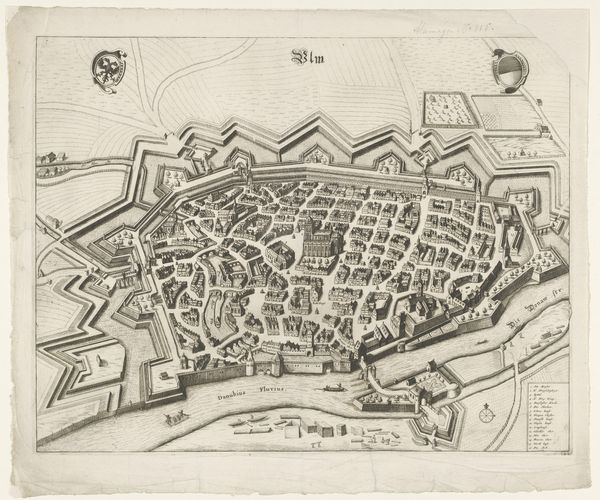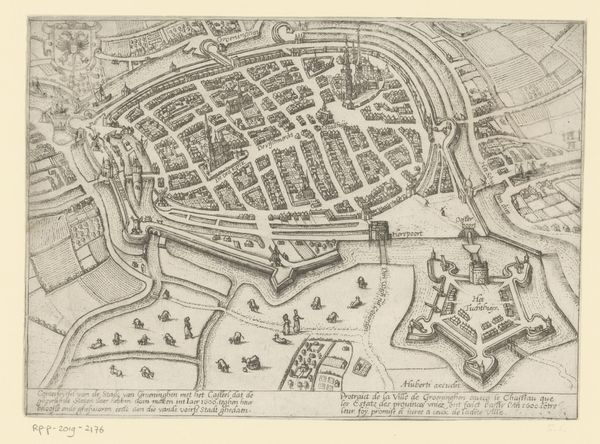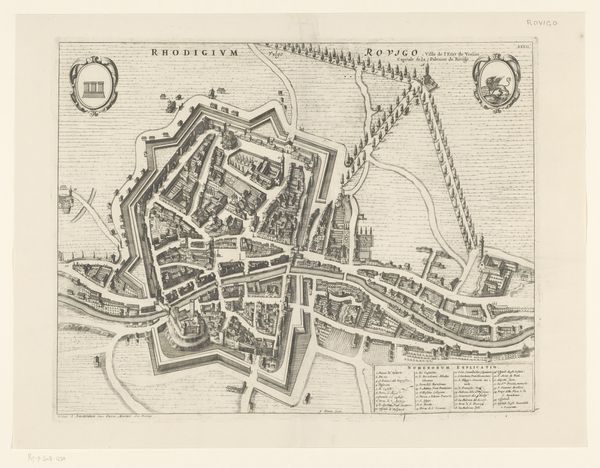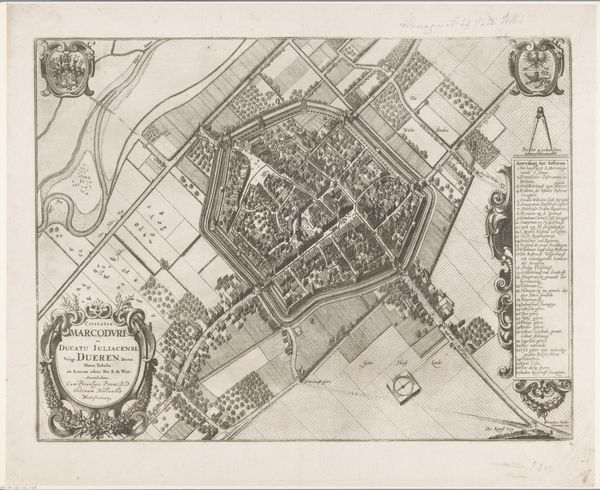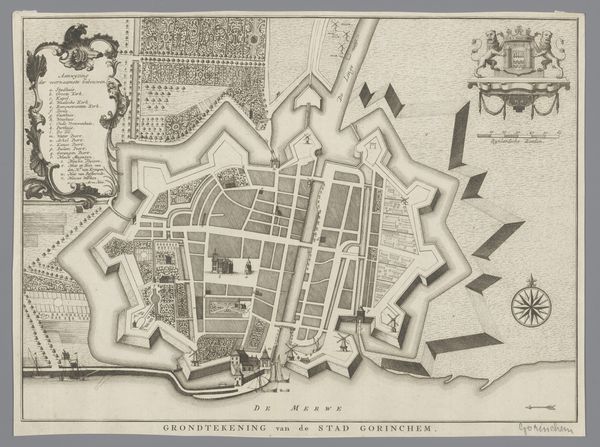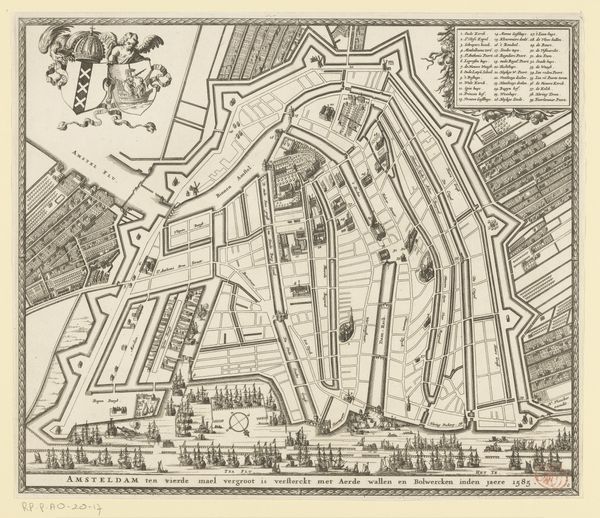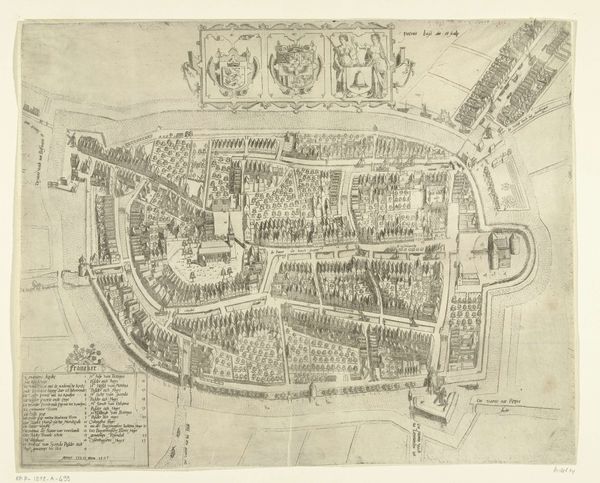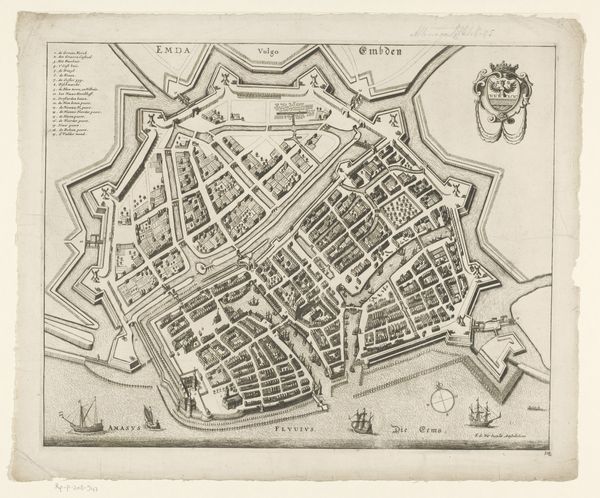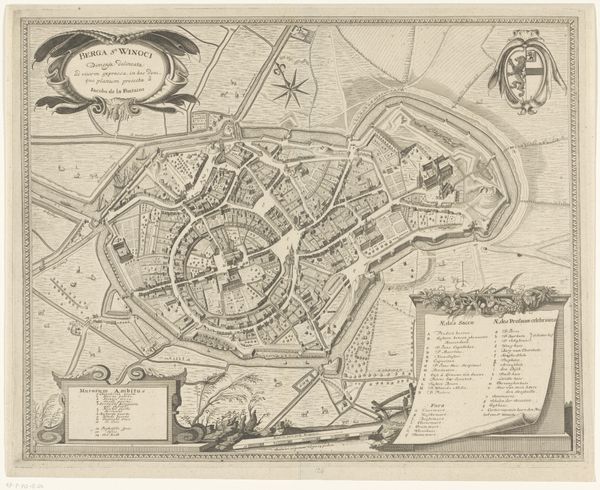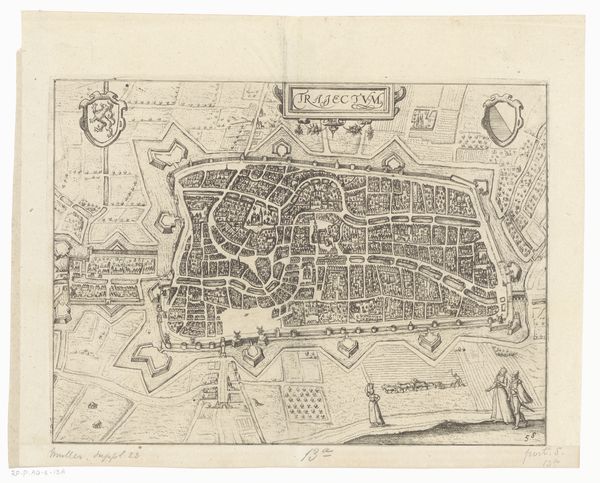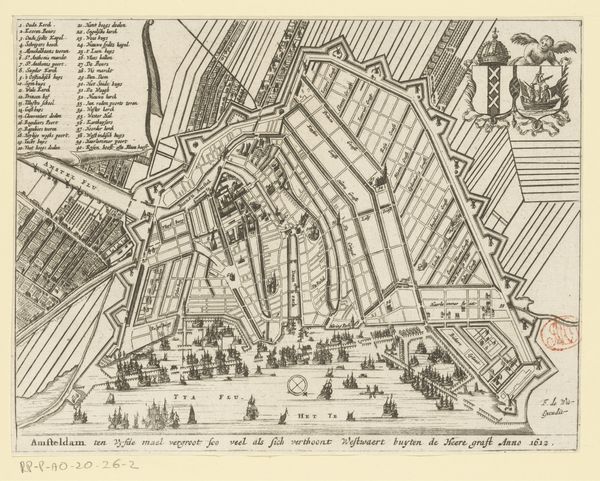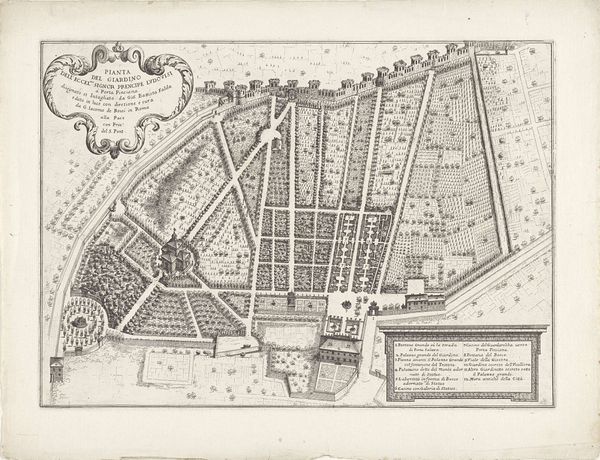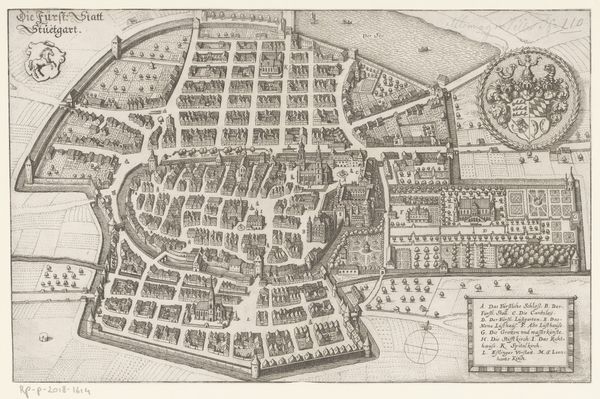
drawing, print, engraving
#
drawing
#
dutch-golden-age
# print
#
cityscape
#
engraving
Dimensions: height 408 mm, width 513 mm
Copyright: Rijks Museum: Open Domain
Curator: Here we have an engraving, a cityscape titled "Gezicht op Lüneburg," dating from after 1657. It's held at the Rijksmuseum. The creator is, unfortunately, anonymous. Editor: My first thought is the immense labor required. Just look at the painstaking detail in etching each individual building. It speaks to a profound commitment to craft. Curator: Indeed! Let's dive a little deeper into that. The piece utilizes the printmaking medium to provide, essentially, a bird’s-eye view, an all-seeing perspective on this specific urban center. The artist would have likely relied on draftsmen, surveyors, perhaps even military planners. The engraving becomes both informational and aspirational. The shields add status! Editor: It also makes me think about control, less aspirational perhaps. Notice how everything is contained within the fortified walls. The engraver even includes a key identifying significant structures. Churches are there, the various halls and houses, of course! The symbolic suggestion is clear—order, civic pride. It is like a diagram for maintaining political stability. Curator: Good point about civic stability. We shouldn't forget the socio-economic context, though! Paper production at the time relied heavily on textile waste, on linen rags meticulously processed and pulped. Think about the hands involved, the material sourcing...each impression speaks volumes. It's about more than the image of the city. Editor: Yet, isn’t the choice to depict a walled city, using symbolic visual shorthands and identifiers also revealing deeper longings, or fears, even? This controlled bird’s eye vantage is not without implications! The very act of creating a city “portrait” is, in a sense, controlling the visual memory associated with that place, at least from then onwards. Curator: Absolutely. The city itself is a carefully constructed machine made up of stone, wood, labour, all driven towards specific ends. And our anonymous engraver documented it so! Editor: An object becomes so much richer when it embodies multiple symbolic narratives—and indeed many types of human hand. This engraving provides a lot for scholars from all perspectives to ponder.
Comments
No comments
Be the first to comment and join the conversation on the ultimate creative platform.
